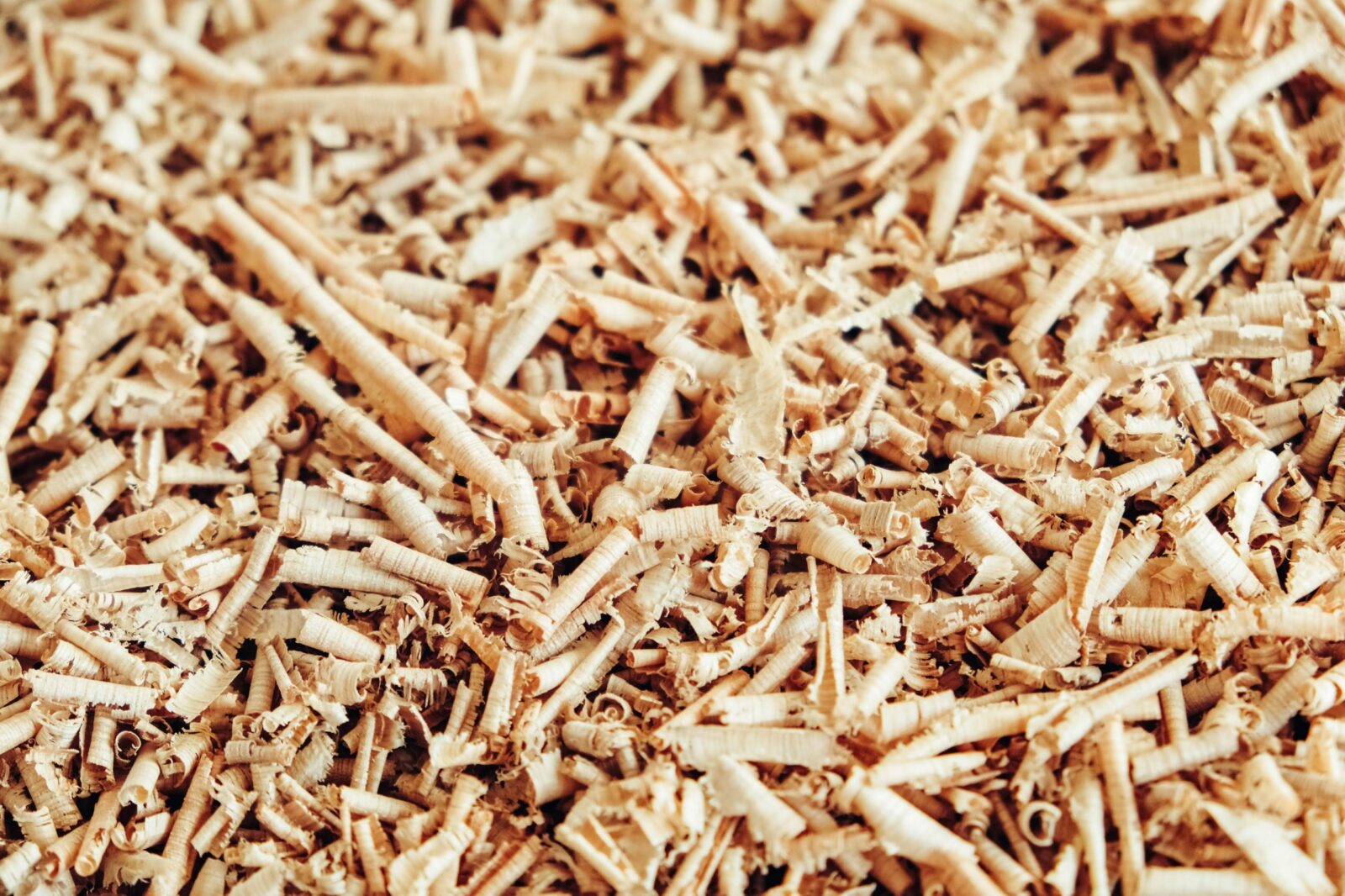Wood shavings
Wood shavings generally come from pine plantations. They are usually kiln dried and have dust removed via extraction. They are the most used and preferred bedding material in Australia.
Characteristics
- Low bulk density
- Medium particle size
- High absorbency
- High friability
- Soft and compressible
- Low thermal conductivity
- Reasonable drying rates
Contaminants and pests
Generally free from pests, weed seeds and diseases if stored correctly before use. There is no evidence that they are more susceptible to litter beetle infestations than other bedding materials.
Sourcing and pre-treatment
The supply of wood shavings has traditional been consistent in Queensland, New South Wales, Victoria, and Tasmania that have substantial plantation timber industries. In recent years it has become more limited in supply and expensive in some areas.
Wood shavings are generally a consistent product that do not require additional preparation or pre-treatment, such as drying, before placement.
Ventilation and moisture management
They do not require any increased management, as they are highly adsorbent yet can dry rapidly with correct ventilation.
Caking and tilling
As with all bedding materials, wood shavings may require tilling to address caking if it is not managed correctly and/or becomes too wet from chicken manure, outside moisture or extraneous water from broken or poorly maintained infrastructure. Due to its high friability and consistency, it is generally less susceptible to caking than other bedding materials.
Litter re-use
Wood shavings are the most common material used in litter re-use practices in Australia. It has proven to be very successful, provided that adequate pasteurisation and moisture removal are practiced between grow-out cycles. It is sometimes blended with sawdust material as part of the re-use practice.
Spent litter management
Useful as a fertiliser in Australian conditions due to its consistency and being a wood-based product, which makes it generally free of weed seeds and other pests.
It is less desirable for use in energy generation using anaerobic digestion, as the timber component will not readily digest. However, the manure and wood components will generate energy in combustion processes, provided the moisture content is low.
Content source: Management of common bedding materials: Wood shavings
Downloads and resources
Best practice litter management manual for Australian chicken meat farms (PDF, 3MB) | online version
Review of fresh litter supply, management and spent litter utilisation (PDF, 3.5MB)
Litter re-use: an evidence-based guide to re-using litter (PDF, 1.3MB)


